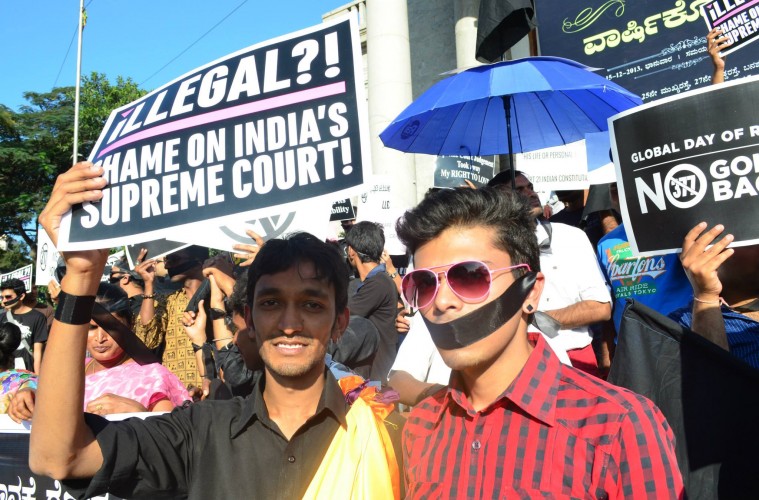In my previous post, I had written about how the 377 verdict by Supreme Court is constitutionally incorrect and violates the essence of social inclusion, social justice and equality clauses of the constitution of India. A thorough reading of the judgment also throws up many self-contradictory points.
On one hand, the judges agree that Section 377 doesn’t violate the rights of the sexuality minoritiesper seunder Para 42.At the same time, it is ironical to see, that the same judgment says:
while reading down Section 377, the High Court overlooked that the LGBTs constitute a miniscule fraction of the country’s population and this cannot be made a sound basis for declaring that sectionultra viresof Articles 14, 15 and 21 of the constitution (para 43).
This establishes that the Supreme Court itself acknowledges the possibility that Section 377 poses a threat to the full realization of the above-mentioned rights of the LGBT people, but since, it is a miniscule fraction of merely 12.4 lakhs (as quoted by the Ministry of Health) such violations should not have been addressed by the High Court. It is pertinent here to mention that the fundamental rights under the constitution and the human rights ratified by India under Universal Declaration of Human Rights, 1948 and the International Covenant on Civil and Political Rights, 1966 are indivisible and inalienable in nature. The same is further affirmatively clarified by the Vienna Declaration of Human Rights, 1993. The Supreme Court’s judgment unfortunately violates these basic principles of constitutional philosophy and fails to address such a critical issue as per the requirements of the international human rights law. Moreover, the Supreme Court is constitutionally bound to do complete justice even when the rights of one single individual are violated.
Further, the Delhi High Court interpreted to include ‘sexual orientation’ within the meaning of ‘sex’ under the Article 15(1) of the constitution which enshrines the fundamental right of every citizen to be free from discrimination based on ‘sex’. This analogy of the high court is based upon three aspects, namely that:
- The constitution aims at ensuring equality in the laws among subjects, wherever possible (which is based upon Supreme Court’s own judgment inMenaka Gandhi v Union of India,(1978)
- Through the judgment of the South African Constitutional Court inThe National Coalition for Gay and Lesbian Equality v. The Minister of Justice(1998), and on the basis of
- The construction given to the Articles 2 and 26 of the International Covenant on Civil and Political Rights, 1966 by the United Nations Human Rights Committee inToonen v. Australia(1994).
The Supreme Court says:
In its anxiety to protect the so-called rights of LGBT persons and to declare that Section 377 IPC violates the right to privacy, autonomy and dignity, the High Court has extensively relied upon the judgments of other jurisdictions. Though these judgments shed considerable light on various aspects of this right and are informative in relation to the plight of sexual minorities, we feel that they cannot be applied blindfolded for deciding the constitutionality of the law enacted by the Indian legislature (Para 52).
The court has failed to explain the basis as to what constitutes the so called ‘blind-folded reliance on foreign judgments’ on the part of the High Court. The point to note here is that the high court has stretched its judgment onto some foreign judgments only when there is no Indian judgment on this point. The absence of an explanation behind such a significant conclusion establishes the gross miscarriage of justice done by the Supreme Court against the rights of the sexuality minorities.
Such ‘gross miscarriage of justice’ qualifies it to be reviewed further by a larger bench so as to rectify such errors and to restore justice as the gay, lesbian, bisexual or transgender people are equal citizens under the constitution and they deserve equal dignity and respectat parwith the majority. Amongst the positive tension built by the media, protest marches in all major Indian cities in the wake of this judgment, the Government of India has come out in support of the LGBT community and the accordingly, Attorney General has filed a petition in the Supreme Court that calls the Chief Justice of India to constitute a larger bench to review this judgment. Now, it would be interesting to see, whether the Supreme Court admits this review petition and, if it does, what attempts it puts to rectify this historic blunder.


